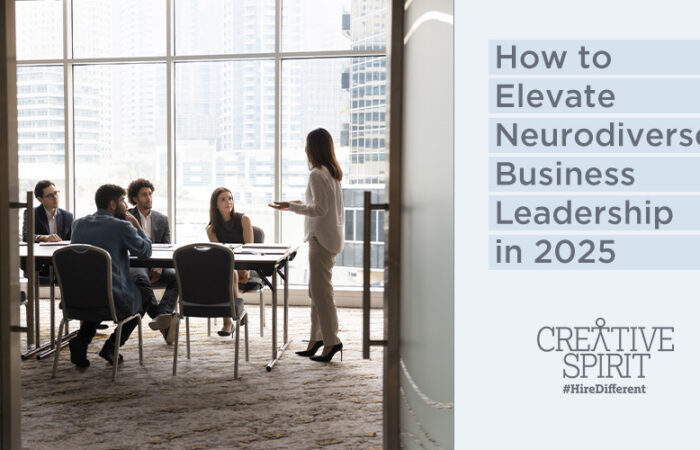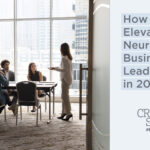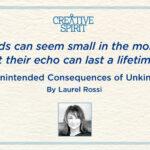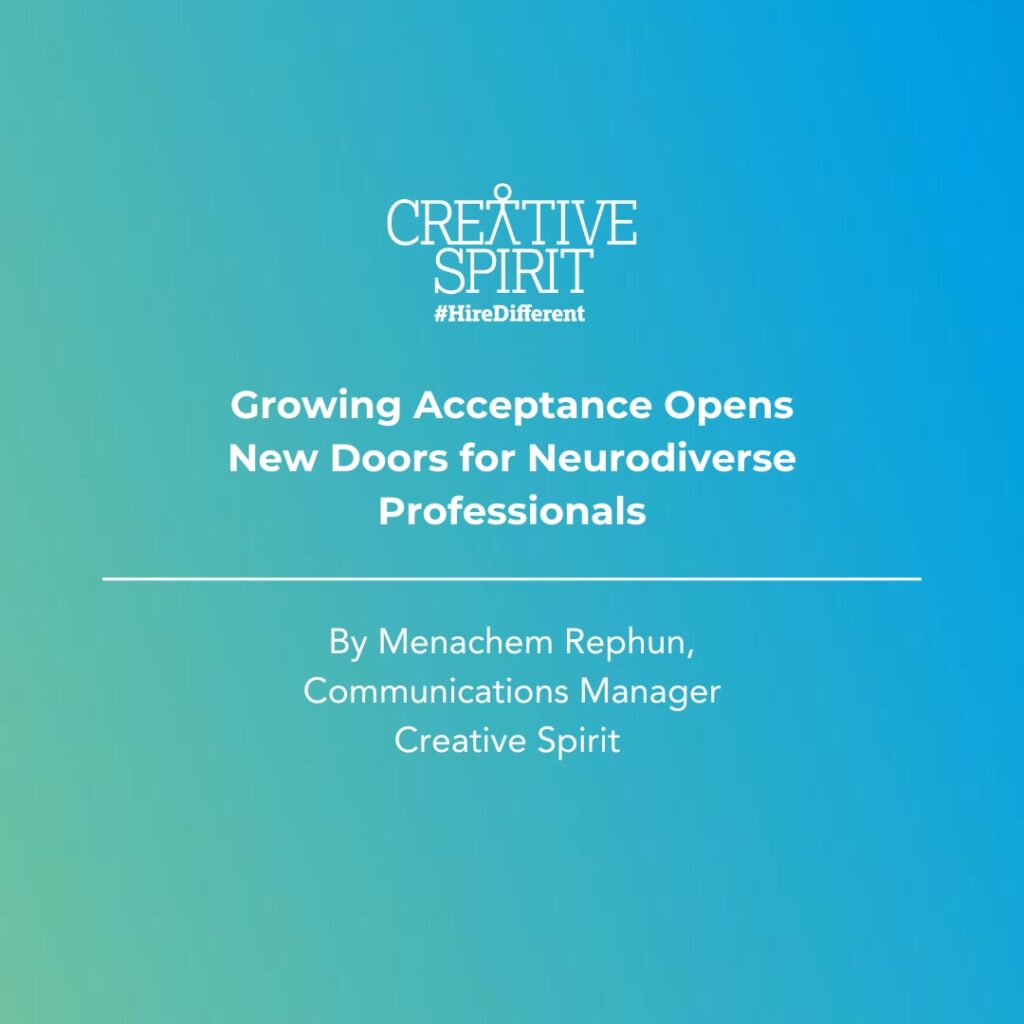
“Inclusion” has become almost a buzzword these days, used by many companies for marketing and PR purposes. But what does inclusion – in its most authentic sense – look like for millions of Americans with disabilities and neurodiversity? At Creative Spirit, we believe inclusion means a society that isn’t just “tolerant”, but fully appreciative of people with disabilities. We also believe the “neurodiversity” movement is crucial to achieving that goal. “Neurodiversity” views autism, dyslexia, and others as normal variations in the human brain, rather than problems needing to be “fixed”. By encouraging a more positive perception of disability, the neurodiversity movement has created new pathways to success and career growth.
The Neurodiverse Revolution
Though it dates back to the late 1990s, the concept of neurodiversity (introduced by Australian sociologist Judy Singer) is still a revolutionary idea. This is because for most of American history, society has mainstreamed the so-called “medical model” of disability. This approach views disability itself as the problem, rather than accommodating the basic needs of people with disabilities. At roughly 19% of the population, Americans with disabilities/neurodiversity comprise the largest minority demographic in the U.S., according to InvisibleDisabilities.org. Countering this perspective, the neurodiversity movement encourages companies to be more appreciative of neurodiverse employees and their talents. The neurodiversity movement has also contributed to work environments where employees feel more comfortable disclosing their diagnoses, leading to more productivity and growth. Acknowledging these efforts is especially important during Dyslexia Awareness Month, an annual event highlighting the lived experiences of people with dyslexia. According to DiscoveryABA.com, roughly 780 million people worldwide have dyslexia, a condition that affects reading and writing abilities. No effort to improve fair-wage employment for neurodiverse individuals can be complete without including the millions of Americans with dyslexia.
How Disability Rights Activists Have Made A Difference
Disability rights activists deserve a huge part of the credit for the positive changes that have taken place in society. These individuals have worked tirelessly to change society’s view of disability through non-violent protests and efforts to advance crucial legislation. Their greatest success was achieved with the the Americans With Disabilities Act (ADA). Signed into law in July 1990, the ADA revolutionized accessibility and civil rights for millions. Thanks to the efforts of the neurodiversity movement, major companies like Google, Microsoft, Hewlett-Packard, and others, now offer onboarding programs for neurodivergent employees. “As this support for diversity grows, another valuable group that companies are beginning to discover is neurodiverse talent,” The Code Initiative, a Canada-based nonprofit, writes.
Code Initiative cites findings from Harvard Business Review that neurodiverse individuals are reported to have “strong memorization, mathematical and pattern recognition skills.” In the workplace, these skills transfer into abilities to innovate and problem-solve, which are crucial skills to have, especially in high-tech environments.” The neurodiversity movement has also led more employers to appreciate the strong work ethic of many neurodiverse employees, which leads to them staying on the job longer, and the relatively low cost of providing reasonable accommodations. According to InvestmentNews.com, Marcus Soutra, president of the nonprofit Eye to Eye, says more employers are starting to realize that creating inclusive workplaces is more about “evolution than accommodation”.
Another encouraging finding in 2024 came from the National Institute on Disability, Independent Living, and Rehabilitation Research (NIDILRR). According to the NIDILRR in its 2024 report on people with disabilities in America, “The gap in the “employment-to-population ratio” between people (civilians 18-64 years old living in the community) with and without disabilities narrowed from -35.9 percentage points in 2021 to -34.4 percentage points in 2022”. This progress is encouraging, but it’s important to point out the progress that still needs to be made. The 2022 American Community Survey (ACS) found that just 39.2% of men and women with neurodiversity from ages 21-64 were employed, regardless of gender, education level, or ethnicity. As such, there’s still a long way to go in achieving true equity and inclusion in employment for the neurodiverse community.
While the “social model” of disability has become more prevalent, some disability advocates point out that it isn’t necessarily the “be-all-end-all” for inclusion. “Some feel the social model paints disability with a broad brush,” Susan Lacke, a disability advocate, writes for Accessibility.com. “Ignoring individual differences and instead lumping together all disabilities into one demographic category with a standardized set of solutions.” At the same time, Lacke hastens to point out that disability models “should not be seen as a series of mutually exclusive viewpoints, with one superior to others or replacing the models before them. Instead, they are a reflection of how society evolves in its thinking about disability.” A fact-sheet from the organization InclusionLondon describes the social model as “powerful and liberating” in reflecting the real-life experiences of people with disabilities.
The growth of social media, particularly platforms like Instagram and TikTok, have created another unique opportunity: namely, for people who are neurodivergent to become “influencers”, educating a wider audience about disabilities and the strengths and talents that countless people with neurodiverse conditions have. Some notable neurodiverse influences include Daniel M. Jones, an author on the autism spectrum whose channel “The Aspie World’ helps to inform and educate about autism; Haley Moss, an attorney, artist, author, and speaker with autism; Evie Meg, an influence and author with Tourette’s Syndrome; and Lizzie Acker, an influencer with dyslexia and a 2021 contestant on the reality TV series the Great British Bake-Off.
Also notable is Dr. Josh Loebner, Global Head of Inclusive Design for VML. Creative Spirit had the privilege of meeting Josh at the 2024 Mosaic Awards, which celebrates companies and individuals who demonstrate outstanding commitment to diversity, equity, and inclusion through their creative work. Loebner is certainly one of those individuals, due to his instrumental role in creating Mouthpad, a device that allows people with paraplegia and quadriplegia to control their phones, computers, or tablets with the use of their tongue. He also worked closely with Honda to create the “Scenic Audio” app, which gives blind or vision-impaired passengers real-time descriptions of the view outside their window. Loebner himself identifies as disabled, due to being legally blind. According to Raconteur.net, Loebner (who holds a Ph.D. in advertising and disability from Clemson University) has dedicated his career to ensuring that marketing and advertising speaks to the disabilities/neurodiverse community in deeper and more meaningful ways. Loebner was a participant at this year’s Mosaic Awards, an annual event celebrating companies that excel at diversity and inclusion in advertising. Another notable campaign featured at the event was Dreamcaster by Michelob ULTRA and FCB New York. This initiative won the Allyship to Advocacy Award for bringing the NBA experience to 284 million sports fans who are blind or vision-impaired through revolutionary new technology.
Another notable effort is “Assume I Can”, a campaign pushing back against stereotypes and promoting inclusion for people with Down syndrome. According to the campaign’s website, the effort is “a call for everyone to put an end to prejudice and support the concrete potential of each person who has Down syndrome.” The efforts of Loebner, and all of the campaigns mentioned above, embody the way that ingenuity and creativity are essential in changing the status quo. Incidentally, Oct. 10 was also World Sight Day, focusing on the importance of eye care and eye health for children and young people. It also drives home the point that physical disability, including vision impairment, does not have to be an impediment to success or career growth. We believe a truly inclusive society is one where neurodiverse individuals are fully appreciated for their talents, strengths, and abilities, especially in employment. The neurodiversity movement has moved us closer to that goal. Now it’s up to us to reach the finish line.

